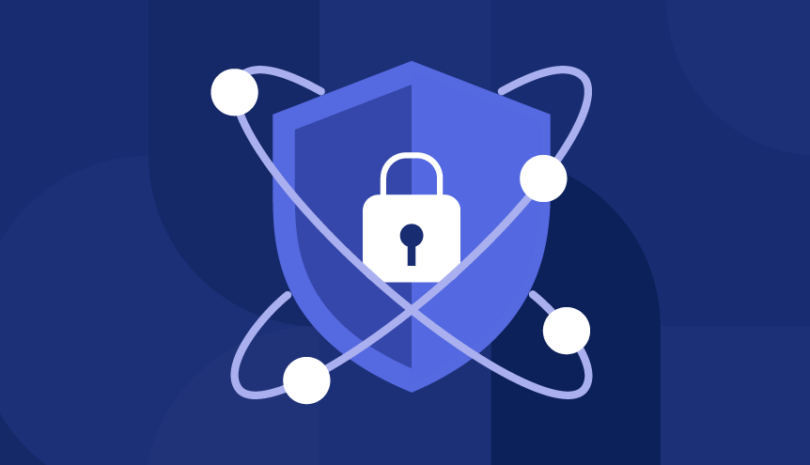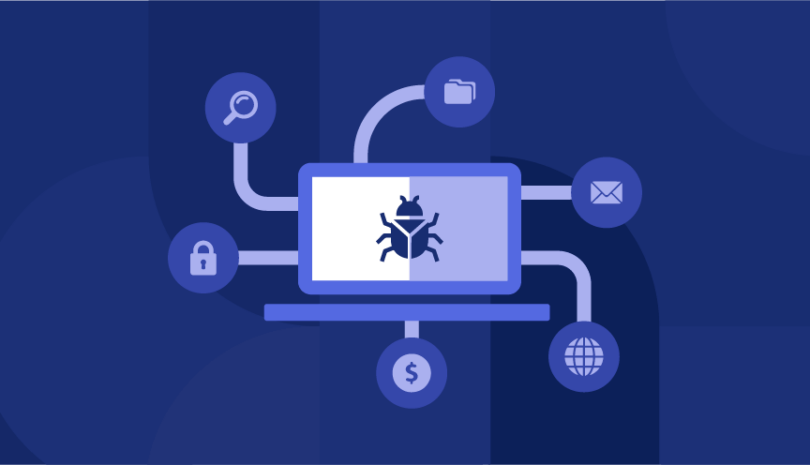Cyber security monitoring is the process of continuously monitoring IT infrastructure to detect cyber threats and data breaches. Endpoint and network monitoring help security teams identify potential malicious threats.
It strengthens an organization’s cybersecurity posture by:
- Identifying suspicious behavior and attempts to gain unauthorized access to your network
- Implementing threat intelligence to detect threats
- Deciding in advance which behavior requires a response and which is deemed suspicious
- Proactively responding to threats before they become a security incident
- Producing detailed network security reports to meet compliance
Cybersecurity monitoring continually observes activity in your organization’s network to decide whether or not it should respond to a security incident.
How Does Cybersecurity Threat Monitoring Work?
Cybersecurity risks stem from two separate sources: threat actors and vulnerabilities. Threat actors are individuals with malicious intent to infiltrate your computer network and make unauthorized system changes, while vulnerabilities are weaknesses in your security system that these threat actors could exploit.
Security threat monitoring can be grouped into two basic categories, each with its type of cybersecurity monitoring tools:
- Network security monitoring. Network monitoring detects performance issues that could signal an attack or that your network is vulnerable to an attack. These performance issues are detected through log management that provides IT teams with data and triggers alerts to any security threats. Security Incident and Event Management Systems (SIEM), Intrusion Detection (IDS) and Behavioral Analytics (BA) systems are network security monitoring tools widely used by enterprises.
- Endpoint monitoring. Laptops, cellphones, tablets, and IoT devices are all devices with endpoints connected to your organization’s network that should be continuously monitored to detect potential security threats to these network devices. Endpoint Detection and Response (EDR) and Endpoint Protection Platforms (EPP) are endpoint monitoring tools used widely by enterprises.
5 Step Plan for Implementing a Cybersecurity Monitoring Program
Effective cybersecurity monitoring takes planning and coordination throughout your organization in addition to leveraging outside resources. It’s important to carefully address different aspects of your program as you develop it, with the intention of improving your cybersecurity posture.
Here are the steps to get started:
1) Implement the right SIEM tools and software solutions
A Security Information and Event Management (SIEM) platform is an essential tool for cybersecurity professionals that combines, monitors and analyzes massive amounts of security information and log data. This allows your organization to prioritize alerts, respond to the most serious security issues and take the proper security measures to prevent security incidents in the future.
2) Hire trained experts and train employees
In addition to implementing the proper tools, organizations must hire experts who understand IT infrastructure and can detect threats and respond to them as quickly as possible. The organizations with the strongest cybersecurity implement a culture of security by educating their entire organization about their cybersecurity programs so everyone – from the IT department and security to HR and the office manager – understands their role in detecting cyber threats.
3) Employ a Managed Security Service Provider (MSSP)
MSSPs offer an array of services to improve your organization’s cybersecurity. The most common include penetration testing, security perimeter management, security monitoring, onsite consulting, incident response, and compliance monitoring. MSSPs can assist you in monitoring your network and responding quickly to cyber threats.
4) Identify assets and events which needed to be logged and monitored
Any events which seem unusual should be logged and managed. Log management allows the IT team to investigate the source of a data breach and locate the threat actors. It also allows the IT team to identify any vulnerabilities in the organization’s computer networks or operating systems and fix them.
5) Establish an active monitoring, alerting and incident response plan
Finally, a proper cybersecurity monitoring program includes not only a plan for monitoring and alerting but the steps your organization must take in the event of a data breach. Active monitoring includes setting up your SIEM tool to automate monitoring, while incident response determines which packets (requests) should be blocked, accepted, or rejected. Alerts send notifications to a user or admin for specific actions, such as the use of brute force or in the case of someone uploading malicious files.
What are the Challenges in Implementing Cybersecurity Monitoring?
Although cybersecurity monitoring is essential for organizations, it is also critical for your organization to decide which security controls need to be implemented. These security controls assist your organization in both defending against cyberattacks and meeting required regulations. Even with the best efforts, however, you may face challenges while implementing your cybersecurity monitoring.
These challenges include:
Selecting the right toolsets
Today many cybersecurity monitoring tools exist in the market, each with different capabilities and advantages. For example, different tools can be programmed for different conditions. Some can analyze logs and packets automatically, while others require manual intervention. Some can record security logs for continued analysis while others cannot. Your security team will need to research and discover which tools are most appropriate for your organizational needs.
Attack detection through proper security monitoring
Although more than a dozen types of attacks exist, most organizations are aware of common ones such as, phishing, malware, brute force and DDoS. Even when an organization has the proper toolsets in place, it doesn’t always know how to properly configure them to detect and filter out noise. Proper security monitoring ensures that alerts are sent to the IT team in the event of suspicious behavior or unusual activity.
Examples include:
- Continuous requests from the same IP addresses. These requests should be blocked for a specific period to allow the server to cool down.
- Requests from the same packets that originate from different IP addresses. This is a sign of malicious behavior and should be blocked.
- Access to restricted files or URLs. Users attempting to access files they don’t need should be blocked.
Why is Continuous Cybersecurity Monitoring Important?
Attack surfaces have expanded thanks to the rise in IoT, the adoption of cloud services and the increase of remote and hybrid work environments, making security monitoring more complex and difficult to achieve. Continuous monitoring automates the process of assessing an organization’s security measures. Recent developments have also changed cyber criminals’ tactics and techniques, making continuous monitoring more essential than ever for enterprises to stay on top of evolving cyber threats.
What are the Advantages of Continuous Cybersecurity Monitoring?
Firewalls and anti-malware software are insufficient in defending against cyber threats. A more proactive approach is needed to not only defend against the rise in cyber threats but anticipate and respond to them before they cause damage. Automating security measures allow your organization to have more effective cybersecurity to prevent attacks from occurring.
Here are a few additional benefits continuous cybersecurity monitoring can bring to your organization:
It helps in detecting and responding to cyber threats faster
Cybersecurity Mean Time to Detect (MTTD) and Mean Time to Respond (MTTR) are two important measurements in threat detection and response. cybersecurity monitoring reduces both MTTD and MTTR so that organizations can minimize the damage incurred from data breaches, unauthorized system changes, or cyber attacks. Another advantage of reduced MTTD and MTTR is a reduction in downtime for an organization’s IT team.
It helps in increasing productivity
All organizations want to maximize their employee’s productivity. When an organization’s IT infrastructure is secure and working efficiently, your IT team and security team can focus on their day-to-day tasks instead of detecting cyber threats and responding to data breaches.
It helps in meeting compliance with standards and regulations
Failure to meet compliance with GDPR, PCI DSS, NIST 27001 can cost organizations millions in fines and penalties. Continuous security monitoring helps identify which security controls your organization should put in place to improve its data security and reduce the risk of a data breach.
How Panorays Can Help
Panorays offers an automated, comprehensive and easy-to-use third-party security platform that manages the whole process from inherent to residual risk, remediation and ongoing monitoring.
For more information or to see an example of how it works, please request a demo today!
FAQs
Cyber security monitoring is the process of continuously monitoring an organization’s network and systems to detect cyber threats and proactively respond to minimize damage from a data breach or other security incident.
* It helps defend against an expanding attack surface. This is essential as hybrid and remote work environments have become the new norm.
* It helps stay on top of evolving threats. Attackers are becoming more sophisticated and organizations of all sizes across all industries must be prepared to defend against a cyber attack.
* It helps in increasing productivity. When the IT infrastructure is working properly, your IT team can focus on daily tasks instead of security monitoring.
* It helps you comply with standards and regulations. Continuous cybersecurity monitoring raises the awareness of vendors’ changing vulnerabilities and security posture helping you keep on top of your third parties’ regulatory compliance.
Security monitoring is an automated process of collecting security data that indicate potential security threats, delivering and prioritizing alerts so that an organization can respond as necessary. It is also known as SIM (security information monitoring), or SEM (security event monitoring).
Cybersecurity risks are best monitored through continuous security monitoring to identify changing threats in your organization. This security risk assessment process includes identifying and mapping your risks, analyzing and prioritizing the risks, implementing security controls, documenting the results, and developing a plan for mitigation in the event of an attack.


